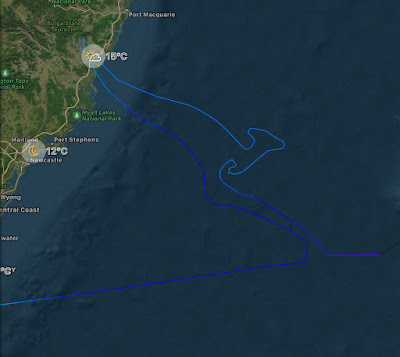Three days ago my family and I headed to the airport for the opening of the new runway. Today we headed off to the airport again for another special memory making event. Qantas was bringing up their 747 Jumbo from Sydney for an hour long joy flight. Qantas were putting on three joy flights before the aircraft leaves Australian shores for good next week. Sydney had there turn on Monday and Canberra will get their turn this coming Friday, but today it was Brisbane's turn. Dubbed the “Jumbo Joy Flights”, the last Boeing 747 in the Qantas fleet took a spin around Brisbane for an hour. The aircraft arrived at 8.53am and went to gate 24. There Qantas staff and passengers lucky enough to score tickets boarded the aircraft for a 10.30am departure. The tickets had gone on sale on July 8th, with business-class tickets sold at AU$747 and economy-class at AU$400 and they all sold out within 8 minutes of going online..
This aircraft was the last of six Boeing 747-438ERs ordered new by Qantas Airways on the 29th November 2001
It entered onto the Australian Aircraft Register as VH-OEJ (CN 32914) on the 16th May 2003
It was the 142nd Boeing airliner delivered new to Qantas Airways
It was the 57th and ironically the last Boeing 747 delivered to Qantas
At 10.33am QF 747 pushed back and at 10.38 taxied out for a runway 19L departure and as it taxied it our local fire tenders gave it a farewell water arch (water cannon salute).
After departing the jumbo circled our amazing city at around 2,000 feet before climbing to 4,000. It headed south and flew up and down over the picturesque Gold Coast. Then it headed north back up the coast and over flew the airport before heading north hugging the coastline.
There it turned south and performed a 1,500 foot low level fly by down the centreline of our new runway before circling and coming in to land for the second time.
After landing at 12.05pm it rolled through and instead of returning to the terminal it went to the Qantas hanger where there were dignities and special guests, along with Qantas staff, waiting to celebrate the occasion.
It was over there for 4 hours 30 minutes and then at 4.35pm it pushed back at taxied out for the final time ever. It departed off runway 19L at 5.03pm, just as the sun was setting, and headed back to Sydney.
Initially, the Boeing 747s were to end service by the end of 2020. However, the COVID-19 pandemic unfortunately expedited the retirement. Qantas started retiring the 747-400 aircraft as early as February this year. This will leave Sydney next Wednesday at 2.30pm and head to the Mojave dessert in California.
The airline is not alone. Other carriers have stopped operating Boeing 747s for economical reasons. United Airlines and Delta Air are two US airlines that have removed the aircraft from their fleet along with Dutch airline KLM..
I have to once again say thank you to my wife and teenage daughters for getting up early and for staying out at the airport all day.. that is love.





















































